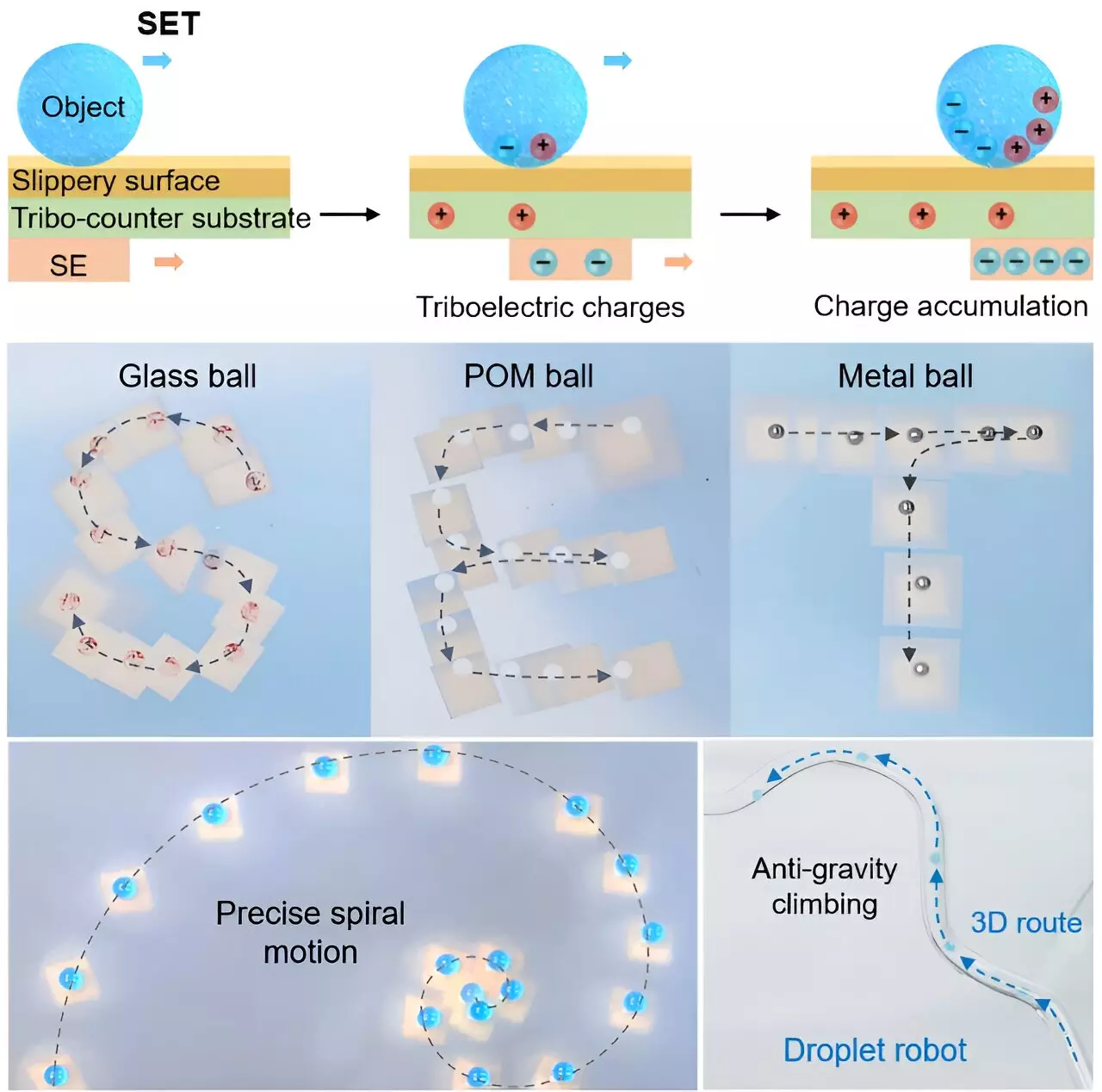In an era characterized by rapid technological advancements, the emergence of self-powered electrostatic tweezers (SET) heralds a groundbreaking chapter in the manipulation of objects at microscopic levels. Born out of innovative research led by Dr. Du Xuemin from the Shenzhen Institute of Advanced Technology, SET represents an intersection of simplicity, efficiency, and versatility in the realm of electrostatic manipulation.
Traditional tweezers are hampered by reliance on external power sources and intricate electrode designs, which not only limit their charge generation but also pose risks of heat production that can damage sensitive materials or biological specimens. The new SET circumvents these obstacles by employing a unique self-powered electrode made from polyvinylidene fluoride trifluoroethylene (P(VDF-TrFE)). This material’s ability to generate significant and adjustable triboelectric charges transforms how we approach manipulation tasks across various scientific disciplines, particularly in physics, chemistry, and biology.
Revolutionary Design and Functionality
At the heart of the SET’s innovation is its ability to produce a remarkable charge density of around 40 nC cm-2 within seconds, a feat impressive not only for its speed but also for its stability. Even after extensive use—1,000 back-and-forth sliding cycles—the charge production remains consistent, with a retained surface charge for over five hours at room temperature and moderate humidity. This durability suggests that the SET is capable of maintaining its functionality in diverse environmental conditions, securing its potential for widespread application.
The structural brilliance of the SET lies in its design. The combination of a tribo-counter substrate and a slippery surface significantly reduces resistance during object manipulation. This ensures smoother operations while also minimizing the risk of biofouling—a critical consideration when dealing with biological materials. By revolutionizing the mechanics of object handling, the SET offers unprecedented flexibility, enabling researchers to manipulate a variety of materials, including bubbles, solid spheres, and liquid droplets.
Applications Beyond Imagination
What makes the SET particularly compelling is its adaptability. Unlike conventional tools limited to straightforward applications, the self-powered electrostatic tweezer is suited for diverse settings—from open to closed platforms, single entities to multiple objects, and even two-dimensional to three-dimensional surfaces. This versatility extends the tool’s functionality to transformative applications such as droplet splitting, merging, and even the assembly of cells.
Imagine a future driven by these capabilities: pump-free microfluidics that streamline experiments without requiring complex mechanical systems. Picture robots designed to manipulate droplets with finesse, revolutionizing the landscape of fluid dynamics research. The possibilities are vast, and they point to a not-so-distant future where SET could be foundational to advancements in many scientific fields.
In essence, the self-powered electrostatic tweezer is not merely a tool; it embodies a paradigm shift in object manipulation technology. By eliminating the complications of traditional methods while delivering efficiency and stability, it paves the way for innovations that could redefine how we approach scientific experimentation and practical applications in industries that rely heavily on minute object manipulation. The dawn of a new era in electrostatic tools has arrived, and it is set to transform our scientific landscapes.


Leave a Reply